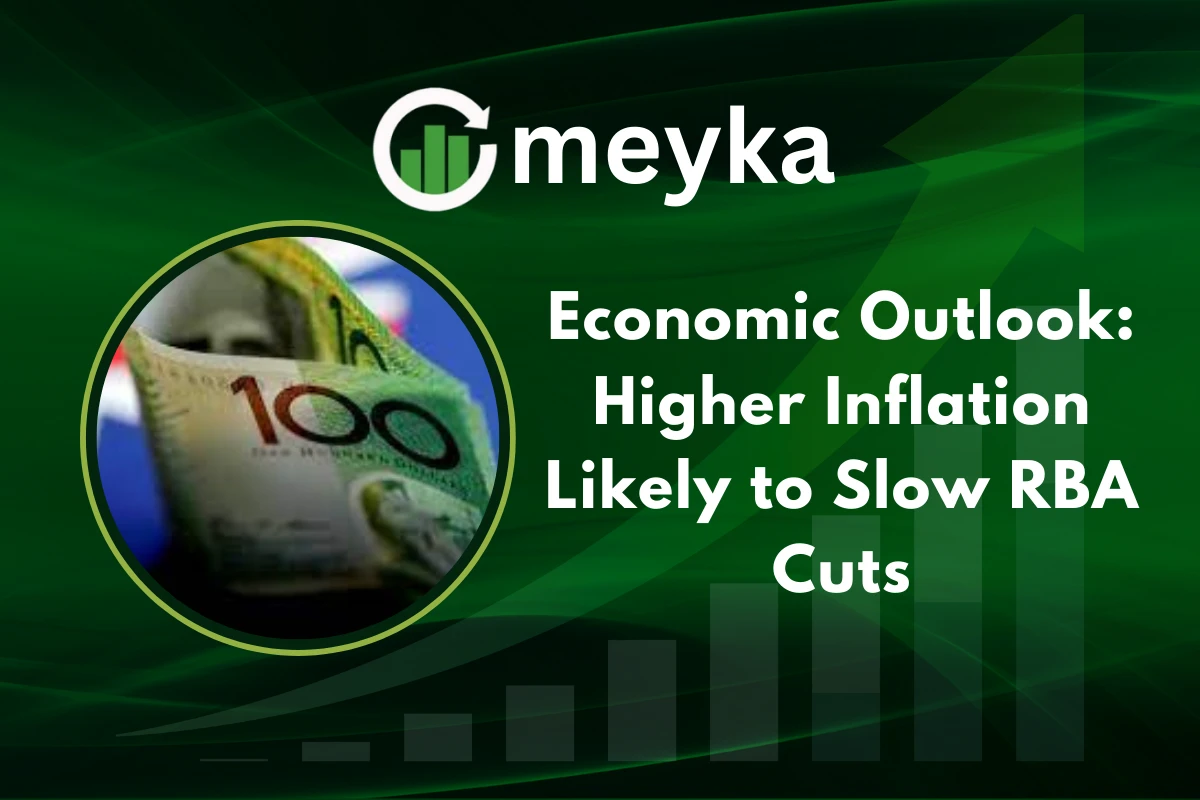Economic Outlook: Higher Inflation Likely to Slow RBA Cuts
Australia faces a delicate balancing act as the Reserve Bank of Australia (RBA) contemplates its next move in monetary policy. Latest inflation data has surprised economists, showing persistent consumer price increases well above the RBA’s 2–3% target range. While markets have anticipated a series of RBA Cuts to stimulate growth, rising inflation has prompted caution. This scenario is creating uncertainty for households, businesses, and investors alike.
The RBA has traditionally used interest rate adjustments to manage inflation and support the economy. Higher prices, especially in essentials such as housing, energy, and food, make aggressive rate cuts risky. Analysts warn that premature easing could worsen inflationary pressures, while delaying cuts may cool consumer confidence and borrowing.
Why Higher Inflation Impacts RBA Cuts
Inflation Trends in Australia
Recent reports from Bloomberg and the RBA’s official publications indicate that annual inflation in Australia remains elevated, with the Consumer Price Index (CPI) rising faster than expected. Core inflation, which strips out volatile items, also shows upward momentum.
Why is inflation rising? Supply chain constraints, higher global energy prices, and strong domestic demand are driving persistent price increases. These factors complicate the RBA’s decision-making.
Implications for Monetary Policy
When inflation exceeds the RBA’s target, the central bank may slow RBA Cuts to avoid fueling further price pressures. Economists note that this cautious approach aligns with global central bank trends, where policymakers balance growth with price stability.
Market Response to Slower RBA Cuts
Australian Dollar Movement
The AUD has strengthened as investors price in delayed rate cuts. A higher interest rate differential with other economies makes the currency more attractive to global investors.
Why is the Australian dollar rising with higher inflation? Rising inflation suggests the RBA may not cut rates as soon, keeping yields relatively high and boosting demand for AUD.
Bond Yields and Equities
Australian government bond yields have risen in response to slower-than-expected RBA Cuts, signaling market anticipation of tighter monetary policy. Equities have shown mixed reactions, with interest-sensitive sectors like real estate seeing pressure, while export-driven industries benefit from a stronger currency.
Statements from Economists and the RBA
Economists from Canstar and Market Index highlight that the RBA faces a policy dilemma. While slowing growth may argue for lower rates, persistent inflation restrains aggressive cuts.
RBA’s Position
According to the RBA Statement on Monetary Policy, the bank continues to monitor inflation, labor markets, and global trends closely. Any decision on RBA Cuts will consider both domestic price pressures and international monetary developments.
Will the RBA still cut rates this year? Most analysts suggest modest easing may still occur, but the pace is likely slower than market expectations, with potential cuts postponed to later in the year.
Global Comparisons: How Other Central Banks Respond
Central banks in the US, Europe, and Asia face similar inflation challenges. The Federal Reserve and Bank of England have maintained a cautious stance, opting for smaller or delayed rate adjustments.
This global context reinforces the RBA’s careful approach to RBA Cuts, ensuring Australia remains competitive without overheating the economy.
Geopolitical and Commodity Impacts
Higher global energy and commodity prices, combined with strong demand in key trading partners, have sustained inflationary pressures. Economists warn that any aggressive easing could worsen the trade-off between growth and price stability.
Household and Business Implications
Mortgages and Borrowing Costs
Slower RBA Cuts mean mortgage rates may remain higher for longer, affecting affordability. Households with variable-rate loans may face continued pressure on monthly repayments.
What does this mean for households? Families may need to budget more cautiously, delaying discretionary spending, while investors in property markets reassess returns.
Business Outlook
Businesses, especially SMEs, may see borrowing costs stay elevated, impacting expansion plans. Conversely, sectors less reliant on credit may benefit from a stable inflation environment.
Investor Sentiment and Market Signals
Financial platforms like Moomoo report that investors are adjusting their expectations. Slower RBA Cuts signal a more cautious investment climate, with a preference for defensive stocks and sectors that benefit from a stronger AUD.
“Investors weigh higher inflation against expected RBA rate cuts, recalibrating Australian market positions.” — via Bloomberg
Risks and Considerations
Inflation Persistence
If inflation remains sticky, the RBA may be forced to reconsider the timing and magnitude of RBA Cuts, prioritizing price stability over short-term growth stimulus.
Global Uncertainty
Ongoing volatility in global markets, energy costs, and geopolitical events could impact Australia’s economic trajectory, influencing RBA decisions.
What risks do slower RBA cuts pose? Slower cuts may temporarily slow consumer spending and investment, but they help prevent runaway inflation and maintain long-term economic health.
Looking Ahead: RBA’s Likely Path
Economists predict a cautious trajectory for the remainder of 2025. RBA Cuts may occur gradually, with incremental adjustments designed to balance inflation containment and economic growth. Market participants are advised to monitor CPI updates, labor market reports, and RBA commentary for signals.
How should investors prepare? Diversifying portfolios and focusing on sectors less sensitive to interest rates, such as export-oriented industries, can mitigate risks.
Conclusion
Australia’s economic outlook highlights the tension between rising inflation and market expectations for RBA Cuts. While households and businesses may face higher borrowing costs in the short term, the central bank’s cautious approach aims to safeguard long-term stability. Global trends, domestic inflation, and policy signals all suggest that any rate easing will be gradual.
The Reserve Bank of Australia remains committed to balancing growth and price stability, signaling a measured path forward in 2025. Investors, homeowners, and businesses must navigate this environment thoughtfully, anticipating both opportunities and challenges.
FAQ’S
The RBA’s inflation outlook remains above its 2–3% target range. Persistent price pressures in housing, energy, and food suggest cautious monetary policy before major rate cuts.
Markets expect modest easing, but higher inflation makes September rate cuts unlikely. The RBA may delay action to prevent further price growth.
Trimmed mean inflation, which removes volatile items, remains elevated. The RBA uses this measure to guide policy, indicating slower RBA Cuts than previously anticipated.
No. Interest rates were maintained near current levels as inflation remains strong. The RBA prioritizes price stability over aggressive cuts.
High inflation erodes purchasing power, so the RBA raises rates to cool spending and stabilize the economy. This prevents runaway price increases before considering RBA Cuts.
Economists predict gradual and cautious RBA Cuts, likely later in the year. Rate adjustments will balance inflation control with economic growth and market stability.
Disclaimer
This content is for informational purposes only and is not financial advice. Always conduct your research.






